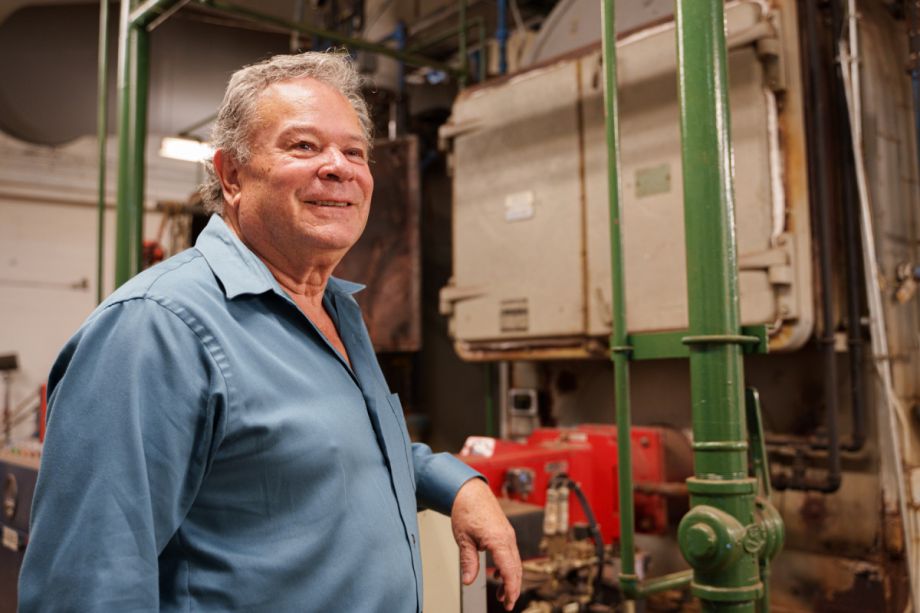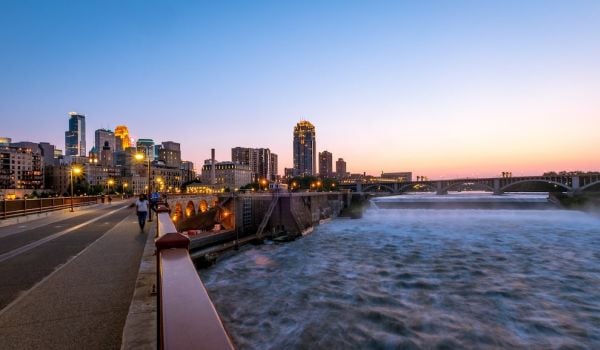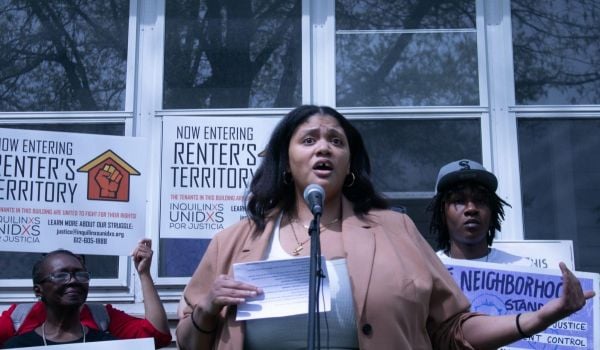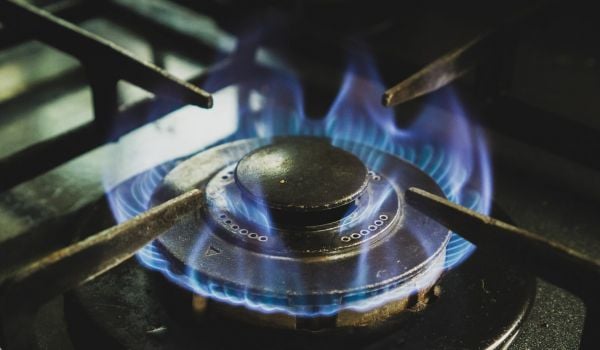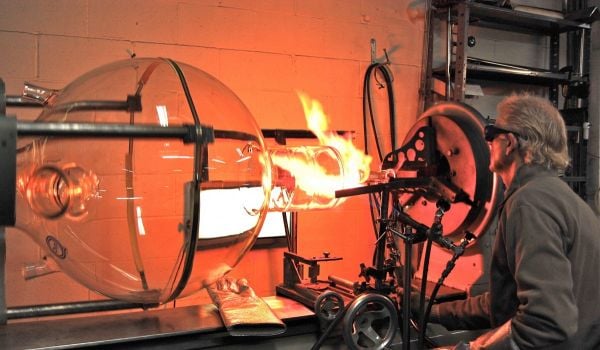This story was originally published in Sahan Journal, a nonprofit newsroom dedicated to covering Minnesota’s immigrants and communities of color.
In the cavernous basement of Sabathani Community Center in south Minneapolis, two massive, 50-year-old boilers are undergoing maintenance ahead of another long winter.
Thelma and Louise, as the monstrous metal boilers are known, are the primary heat sources for the city’s original African American community center, which is housed in a former middle school building on 38th Street. Sabathani spends about $20,000 annually just getting the machines prepped for winter, building manager Jesus Dominguez said.
The nearly 100-year-old building had a Energy Star rating of zero when Sabathani conducted an audit in 2019. Winter utility bills for the 188,000-square-foot structure can be as high as $27,000 a month, according to Sabathani Chief Executive Officer Scott Redd.
“We should be able to take that money and do something else with it,” Redd says.
There are plenty of places the money could be spent. Sabathani Community Center was founded in 1966 by Black members of a south Minneapolis Baptist Church. Today, it serves as a one-stop shop for integrated community services, with a large food shelf, workforce training and medical reference centers. Sabathani also hosts 25 organizations in its building, including a Montessori school and a printing business. Each year, about 150,000 people come through its doors.
Sabathani calls itself “the heart of south Minneapolis,”and the organization has an ambitious goal to make that heart beat greener. As a first step, the community center is one of three buildings selected by Xcel Energy for the $9 million Resilient Minneapolis project, an initiative that will install rooftop solar and a large energy storage battery on the site. The goal is to ensure that Sabathani can be a refuge for the community during power outages caused by extreme weather or to cool off during heat waves.
As climate change caused by the burning of fossil fuels continues to warm the atmosphere, extreme weather events and heatwaves are coming with more frequency, experts say.
“It’s not if it happens, it’s when it happens,” Redd says.
But Sabathani isn’t stopping there. It’s in the midst of a green energy renovation that aims to lower the building’s carbon footprint and utility costs.
Resilience hubs
The Resilient Minneapolis project emerged from Xcel Energy’s Integrated Distribution Plan, an effort required by the Minnesota Public Utilities Commission for power providers to map out their coming investments in the local energy grid.
The project began with Xcel Energy and the Minneapolis government looking for ways to expand energy storage capacity and clean energy sources in the city. The goal was to add more “non-wired” alternatives that can distribute power without connection to power lines and poles. After George Floyd’s murder in May 2020, Xcel wanted to expand partnerships with organizations that are led by and serve local communities of color, according to Xcel Energy policy and outreach manager Nick Martin.
So Xcel and Minneapolis put out requests for proposals, and chose three centers to become resilience hubs. Sabathani Community Center, the Minneapolis American Indian Center, and Renewable Energy Partners on the north side were selected.
“Those are typically the places people go to first when they need help or information,” says Toni Hauser, an emergency preparedness manager with the city of Minneapolis.
Each site will receive a rooftop solar array, and an onsite storage battery. The battery will be on the exterior of the sites, and will be about the size of a shipping container, according to Andre Gouin, a business technology consultant with Xcel Energy. The batteries will typically be part of the larger electrical grid, taking power from the solar panels and distributing it throughout the service area. But during outages, the batteries can be “islanded,” or isolated from the larger grid to power the individual sites.
It will be the first islanding capable battery system in Minnesota and is based on a model Xcel developed in Colorado, Gouin said. On a full charge, the battery could power a building like Sabathani for nearly 10 hours. With direct connection to the solar arrays, it could power the buildings perpetually if Minneapolis were to face a long-term outage.
Construction on the resilience hubs is expected to begin in summer 2024.
Small steps
Sabathani Community Center’s green energy journey started with an energy audit by the Center for Energy and Environment, a nonprofit organization that helps Minnesotans improve energy efficiency. The old brick junior high building, with long hallways, high ceiling classrooms, and a yellowing hardwood gym floor had nowhere to go but up from its initial score of zero. Energy Star is a rating system used by the Environmental Protection Agency to measure efficiency in buildings and appliances.
“They wanted to go from worst to first when it came to their energy systems,” says Kelly Mulleman, a sustainability program coordinator with the city of Minneapolis.
Sabathani started small. Using recommendations from the Center for Energy and Environment, it transitioned to LED lighting and installed smart thermostats throughout the building. The community center received grants from the city’s Green Cost Share Program and the Minneapolis Foundation to cover about $90,000 worth of improvements in late 2021.
The changes are already noticeable on monthly electric bills, Redd says, with estimated annual savings of $28,000.
Approaching an old, inefficient building was daunting, “but there’s a lot of opportunities in buildings like this,” says Jon Blaufuss, a senior program manager with the Center for Energy and Environment who worked on the Sabathani project.
Sabathani Community Center also teamed up with the Center for Energy and Environment to make sure the new affordable senior apartment complex it built in 2021 is as insulated and energy efficient as possible.
With small improvements completed, and the resilience hub installation coming this summer, Sabathani Community Center now has its sights set on a more ambitious target. It wants to replace Thelma and Louise with a geothermal heating system. The goal is to raise $11.2 million to fund the geothermal upgrade.
“We’re all in,” Redd says.
A new geothermal system would reduce maintenance and energy costs significantly, Blaufuss said. Sabathani is pursuing a small footprint system that would drill multiple small wells to access constant ground temperatures. Installing that system would allow Sabathani to eliminate the use of natural gas. Natural gas heating prices have risen in recent years, and are expected to be high again this winter in Minnesota, according to Minnesota Public Radio.
Lowering the carbon footprint of Sabathani and the surrounding neighborhood is a major goal for the community center, Redd said.
Sabathani Community Center is just starting its fundraising efforts for the geothermal system. But if all its plans come together, the center will be able to serve as an example of how it’s possible to retrofit an older structure. There will always be a need for Sabathani, Redd says, and saving money on power will let the organization spend those dollars serving other needs.
Andrew Hazzard is a staff reporter with Sahan Journal who focuses on climate change and environmental justice issues. After starting his career in daily newspapers in Mississippi and North Dakota, Andrew returned to Minneapolis where he worked for local publications such as Southwest Journal. He is a graduate of the University of Missouri School of Journalism and a member of the Society of Environmental Journalists. Andrew enjoys travel, speaks Spanish, and is a depressed supporter of Minnesota's professional sports teams. He and his wife live in Minneapolis.

